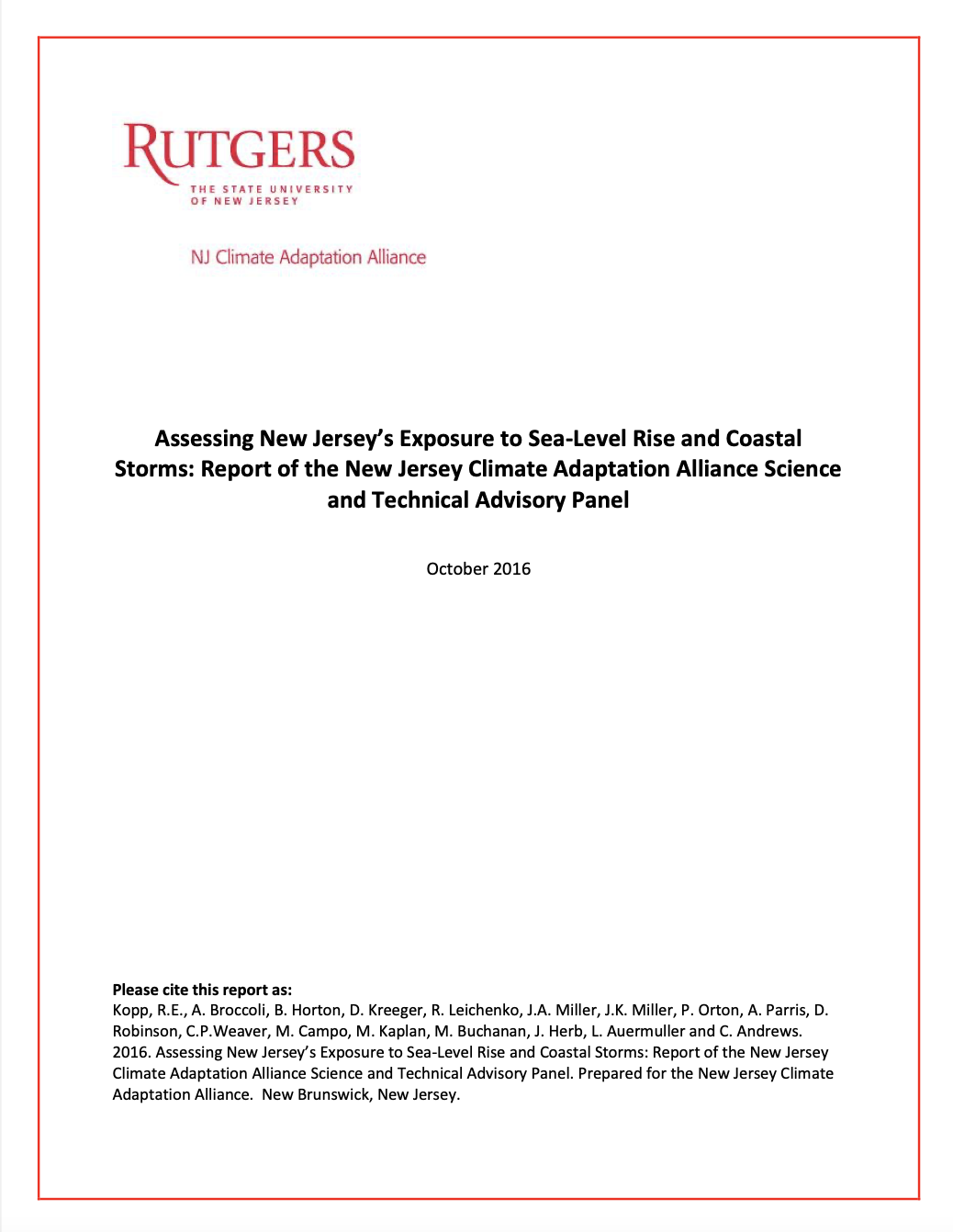In response to a stakeholder engagement process between 2012 and 2014, Rutgers University, on behalf of the NJ Climate Adaptation Alliance (NJCAA), convened a Science and Technical Advisory Panel (STAP) to help identify planning options for practitioners to enhance the resilience of New Jersey’s people, places, and assets to regional sea-level rise (SLR), coastal storms, and the resulting flood risk. The STAP’s charge was to identify and evaluate the most current science on sea level rise projections and changing coastal storms, consider the implications for the practices and policies of local and regional stakeholders, and provide practical options for stakeholders to incorporate science into risk-based decision processes.
The STAP concluded that practitioners should use a range of SLR estimates, given the range of future exposures and vulnerabilities that exist among people, places, and assets in New Jersey communities. The majority of practitioners indicated it would be practical to use two or three SLR scenarios for most of their work. Certain applications require more detailed analysis that considers the full range of projections. The SLR values in Table ES-1 represent projections under continued fossil-fuel-intensive global economic growth through 2050 because differences in SLR projections between emissions scenarios are minor in the first half of the century (with low-emissions projections for 2050 being about 0.1 feet lower than high-emissions projections). Differences in projections related to greenhouse gas emissions are only germane for those practitioners with planning horizons that extend beyond 2050.
